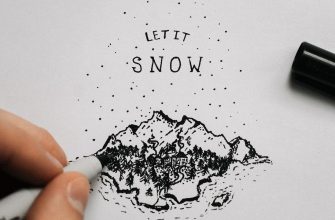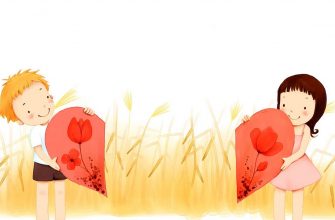Презентация на тему: Russian national costume
Russian national costumeNatalya Akatovaschool #1694Moscow, Russia2008\2009 school yearteacher: Elena Makhovikova “Portrait of Unknown Peasant Woman in Russian National Costume” by I. Argunov (1784)
Items of clothes1. Kokoshnik2. Kosovorotka3. Perednik4. Sarafan5. Kaftan6. Tulup (or polushubok)7. Poneva8. Porti9. Onuchi 10. Lapti 11. Valenki
Kosovorotka (or Rubakha) Kosovorotka is a type of peasants’ shirt with long sleeves. Kosovorotka could be worn every day and on special occasions. Men’s shirts were to their knees and women’s ones were to their ankles. Kosovorotka was worn many centuries. It was made of white, blue and red cloth and decorated with contrast elements.
Perednik Perednik (apron) served to keep the clothes (especially dresses) clean and protect them from dirt. It was worn by peasants. Women used it in the kitchen or in the garden. When they worked outside they wore aprons made of coarse fabric. Not only women wore peredniks. It was used by men too. For example blacksmiths wore leather peredniks. On holidays it was a decoration with patterns typical for the region.
Sarafan Sarafan (pinafore) was worn by girls and young women. It is a long sleeveless dress covering feet and having the form of a high skirt with straps buttoning in front. It was worn in 14th-18th centuries. Sarafan was typical for Russian north, especially Archangelsk and Vologda province. Peasant women wore sarafans during the workdays and on holidays. In the end of 18th century it became very popular all over the country. It could be lilac, cherry blossom, raspberry pink, blue and yellow and was made of taffeta. Petty bourgeois and merchant women wore sarafans too.
Tulup (or Polushubok) Tulup or polushubok was one of the most important items of clothes in Russia. In winter both men and women wore sheepskin overcoats usually with fur on the inside. It could be also made of hare fur. Rich people wore a long fur coat named “shuba” made of sable, fox or beaver fur. People put on fur coats not just in winter but in hot summer days as well to show how rich they were.
Kaftan The word “kaftan” came from Arabic language and meant “man’s dress” It was worn in the medieval Rus. A typical kaftan was with long sleeves. In winter people put on kaftans with very long sleeves instead of gloves. There were different types of kaftans for different occasions. For example: home, rain, riding, festive kaftans and others. They were made of velvet, taffeta, satin, etc. Festive kaftans were made of expensive fabric and decorated with gold and silver buttons, pearls and jewel stones.
Poneva Poneva is a woolen three-piece skirt, made of home-made cloth, usually checkered or stripped. It was ornamented with embroidery, lace, spangles and beads. Poneva was as typical item of Russian women’s costume as sarafan. Fragments of it were found in Slavic barrows of 10-13th centuries. It was worn by married women. There were different patterns and design depending on the region.
Porti Porti are men’s trousers made of rough linen. They were long, not wide, narrowed down to ankle. They were fixed with a string tied around waist. Rich people wore woollen and even silk porti. They tucked their porti into their boots. Peasants wrapped their porti with onuchi and put on lapti over them.
Lapti (bastshoes) Lapti are bast shoes which were worn over homespun onuchi (narrow strips of cotton). They were spread in Rus in old times. Lapti were used in the countryside up to 1930s. They were made of lime-tree, elm, or birch bast. Lapti were tied to legs with cords twisted from the same bast. They were not made in all regions but they were worn everywhere. Lapti were a type of “currency” and an item of trade.
Onuchi Onuchi are long narrow strips of cloth up to 2 meters in lengths over which lapti were worn. They were different colours: white, black or brown. Peasant wore them. Onuchi became a prototype of modern socks. They wrapped feet and shins. In summer people wore onuchi made of linen or hemp cloth. In winter they were woolen ones.
Valenki Valenki are traditional Russian winter footwear. In Russian language the word “valenki” means made by felting. Valenki can be white, black or grey. They are made of sheep wool and are worn on frosty days for walking on dry snow. There is some evidence that Russian people began to make valenki in Nizhegorodskaya province in the end of 18th century. Perhaps they became “grandchildren” of Asian nomads’ felt boots. Valenki are still worn in Russian villages.
Презентация по английскому языку на тему «Традиционный русский костюм»
специалист в области арт-терапии
Описание презентации по отдельным слайдам:
Russian traditional costumes By Olga Grigor’eva, Tri Klyucha Secondary School, Bashkortostan, Russia
The Russian women’s costume was based on the “rubakha” (a linen shirt or blouse). It was made flaxen embroidery, silk lace, golden threads and spangles. Collars and sleeves were decorated extensively.
By the early 20th century the most widespread women costumes were of two types: the South Russian one with poneva, i.e. a homespun woollen skirt, and the Mid-Russian one with a sarafan, i.e. a kind of sleeveless dress.
The typical color of the sarafan and skirts was red, as this color literally translates to “beautiful”.
One of the most common type of festive head-dress was the «kokoshnik», it was masterfully decorated with river pearls, meshwork of pearls, golden and silver needlework, coloured foil and decorative stones. The head-dress was treasured in the family and handed down, and was an integral element of a well-off bride’s dowry.
Презентация «Традиционный русский костюм» на английском языке может быть использована при изучении тем «Одежда», «Традиционная одежда на Британских островах» и др. Слайды содержат описание и изображения летнего и зимнего вариантов русского традиционного женского и мужского костюмов, обуви и украшений.
Номер материала: ДБ-366933
Не нашли то что искали?
Вам будут интересны эти курсы:
Оставьте свой комментарий
Подарочные сертификаты
Просмотр телевизора ухудшает когнитивные функции
Время чтения: 3 минуты
Для школ с модульным графиком каникулы в новом учебном году сократят на неделю
Время чтения: 2 минуты
Спортивные клубы появятся в каждой российской школе к 2024 году
Время чтения: 1 минута
Около 680 тысяч выпускников сдадут ЕГЭ по русскому языку 3 и 4 июня
Время чтения: 2 минуты
Минпросвещения готово рассмотреть альтернативы ЕГЭ
Время чтения: 1 минута
Каждый третий школьник отстает в учебе
Время чтения: 3 минуты
Ответственность за разрешение любых спорных моментов, касающихся самих материалов и их содержания, берут на себя пользователи, разместившие материал на сайте. Однако администрация сайта готова оказать всяческую поддержку в решении любых вопросов, связанных с работой и содержанием сайта. Если Вы заметили, что на данном сайте незаконно используются материалы, сообщите об этом администрации сайта через форму обратной связи.
Все материалы, размещенные на сайте, созданы авторами сайта либо размещены пользователями сайта и представлены на сайте исключительно для ознакомления. Авторские права на материалы принадлежат их законным авторам. Частичное или полное копирование материалов сайта без письменного разрешения администрации сайта запрещено! Мнение администрации может не совпадать с точкой зрения авторов.


















